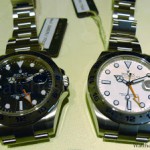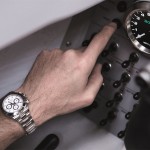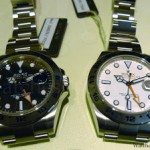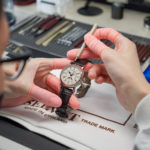A Look Inside Rolex World Service and the Restoration Atelier
Working on new and old watches.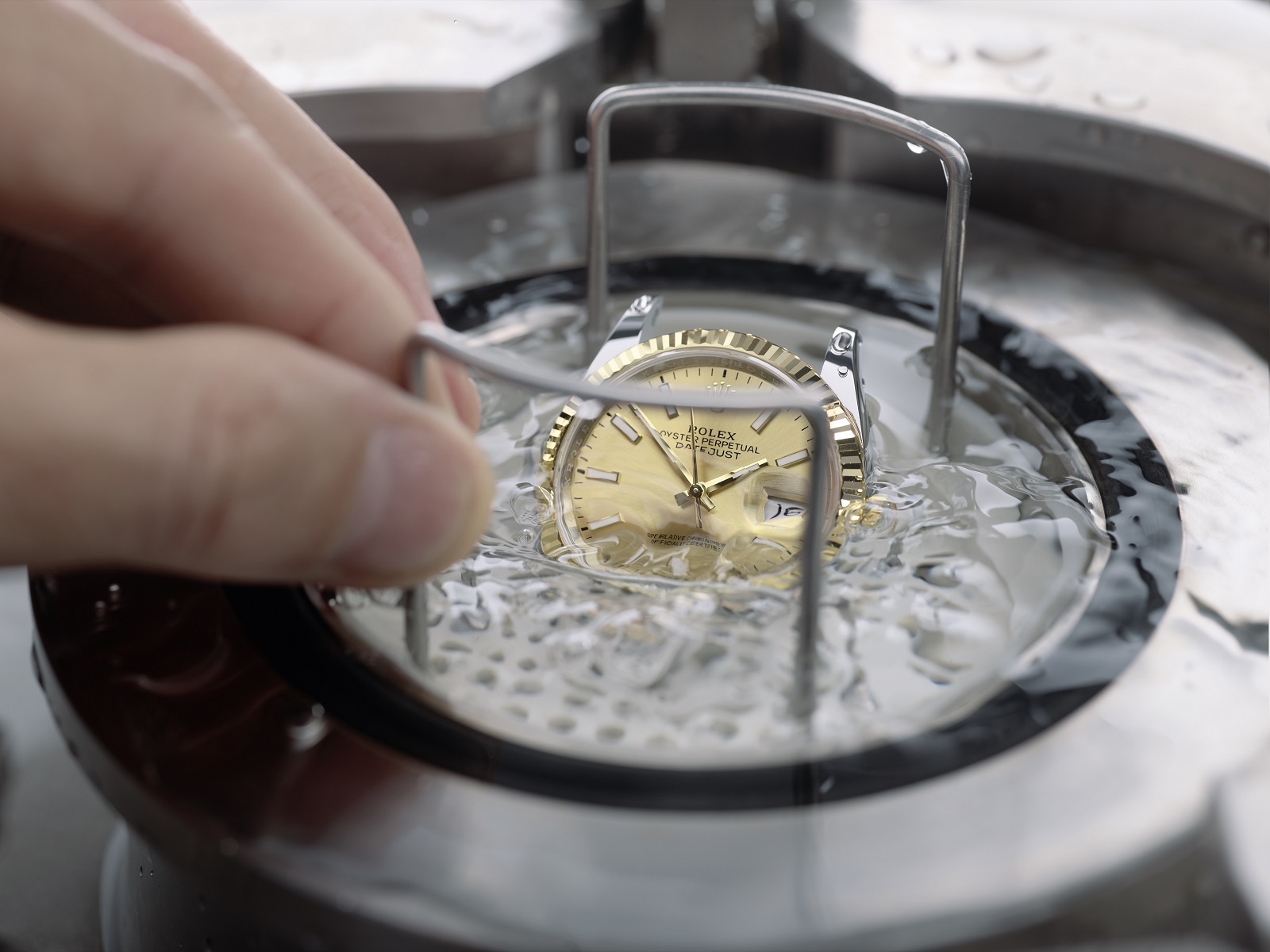
Synonymous with durability and consistency, Rolex is most famous for the water-resistant Oyster watch case. But as important are its movements engineered to optimise timekeeping and functionality, exemplified by innovations like Chronergy and LIGA chronograph wheels.
At the same time, Rolex watches are built for longevity, with the brand guaranteeing the availability of parts and labour for every model for at least 35 years after its discontinuation. Crucial in ensuring that the parts and labour are applied correctly is Rolex World Service, the brand’s after-sales division.
The typically secretive Swiss watchmaking giant recently peeled back the covers on Rolex World Service, allowing a peek into its processes with information and a series of photos.
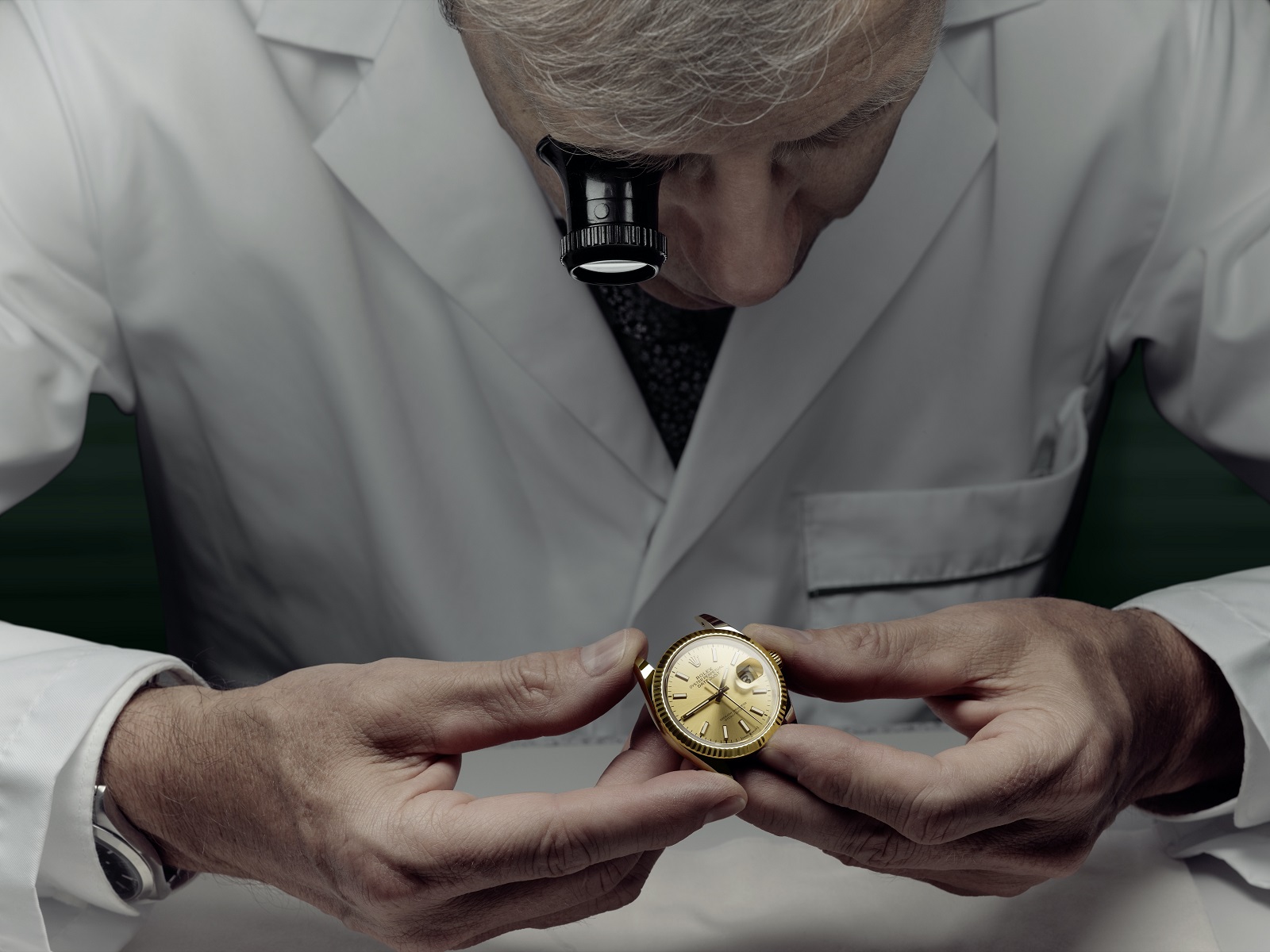
Rolex World Service
Rolex World Service encompasses the brand’s global after-sales service network, which is primarily made up of Rolex subsidiaries but occasionally run by third-party distributors in certain markets. All service centres are meant to offer a uniformly standard of service, regardless of ownership.
A variety of servicing options are on offer at Rolex – all relatively affordable – with the most common being the full service detailed below. As the name implies, a full service is comprehensive, including polishing and replacements of parts. It is catered for the average consumer who wants a watch looking fresh and new, rather than the enthusiast or collector who prefers originality.
A full service starts with watchmaker detaching the bracelet from the watch, before removing the movement, and then the hands and dial off the movement. The movement, case, and dial are each destined for their respective overhauls.
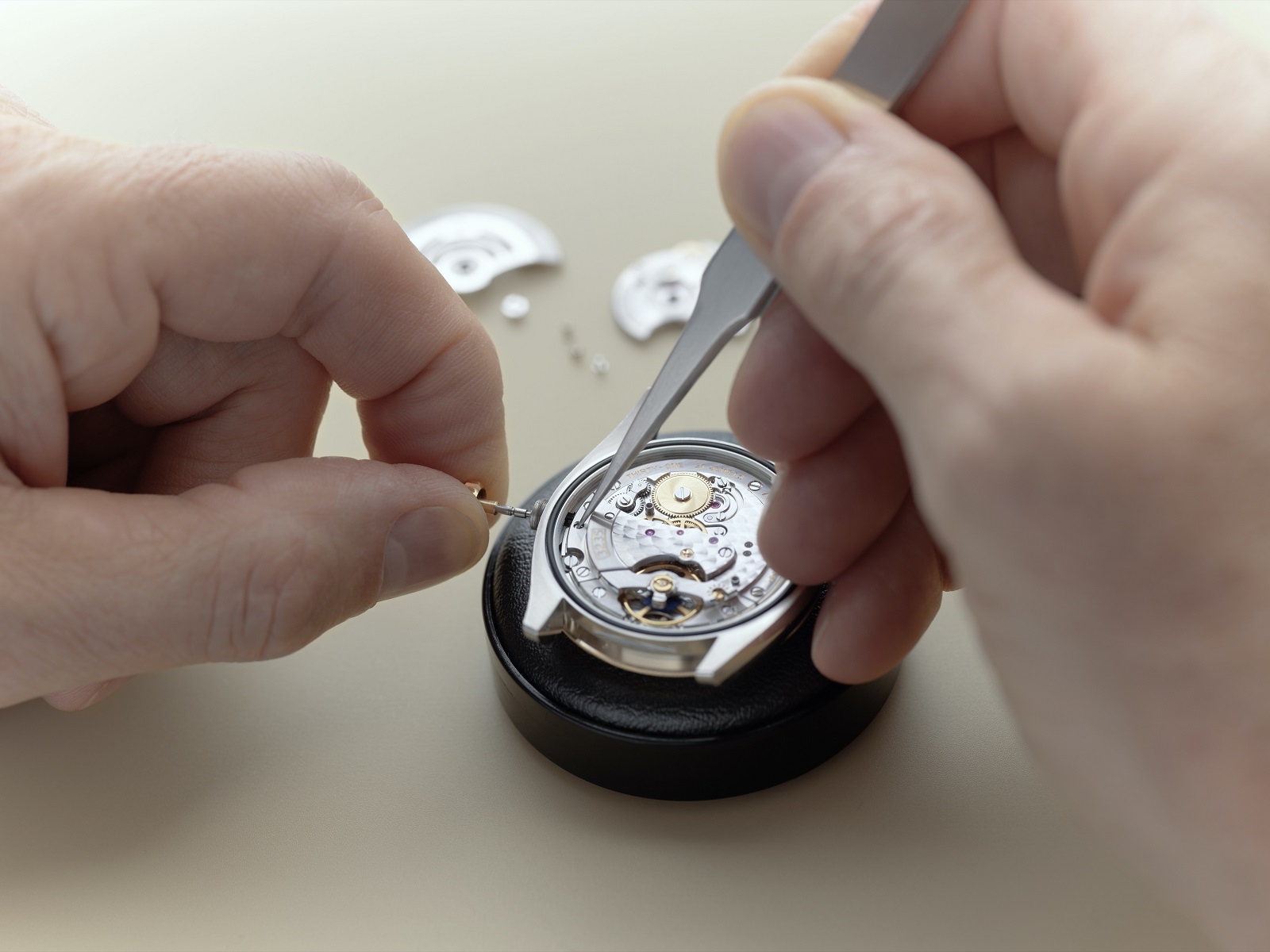
Pressing down on a tiny pusher releases the stem, allowing it and the crown to be removed, the first step in extracting the movement from the case
The movement is disassembled, and each component is assessed. If necessary, components are swapped for replacement parts made in Rolex’s primary movement manufacture in Bienne, Switzerland.
Then all components are cleaned in an ultrasonic bath – a tub filled with cleaning fluid that’s agitated by high-frequency sound waves where the components are essentially shaken until clean.
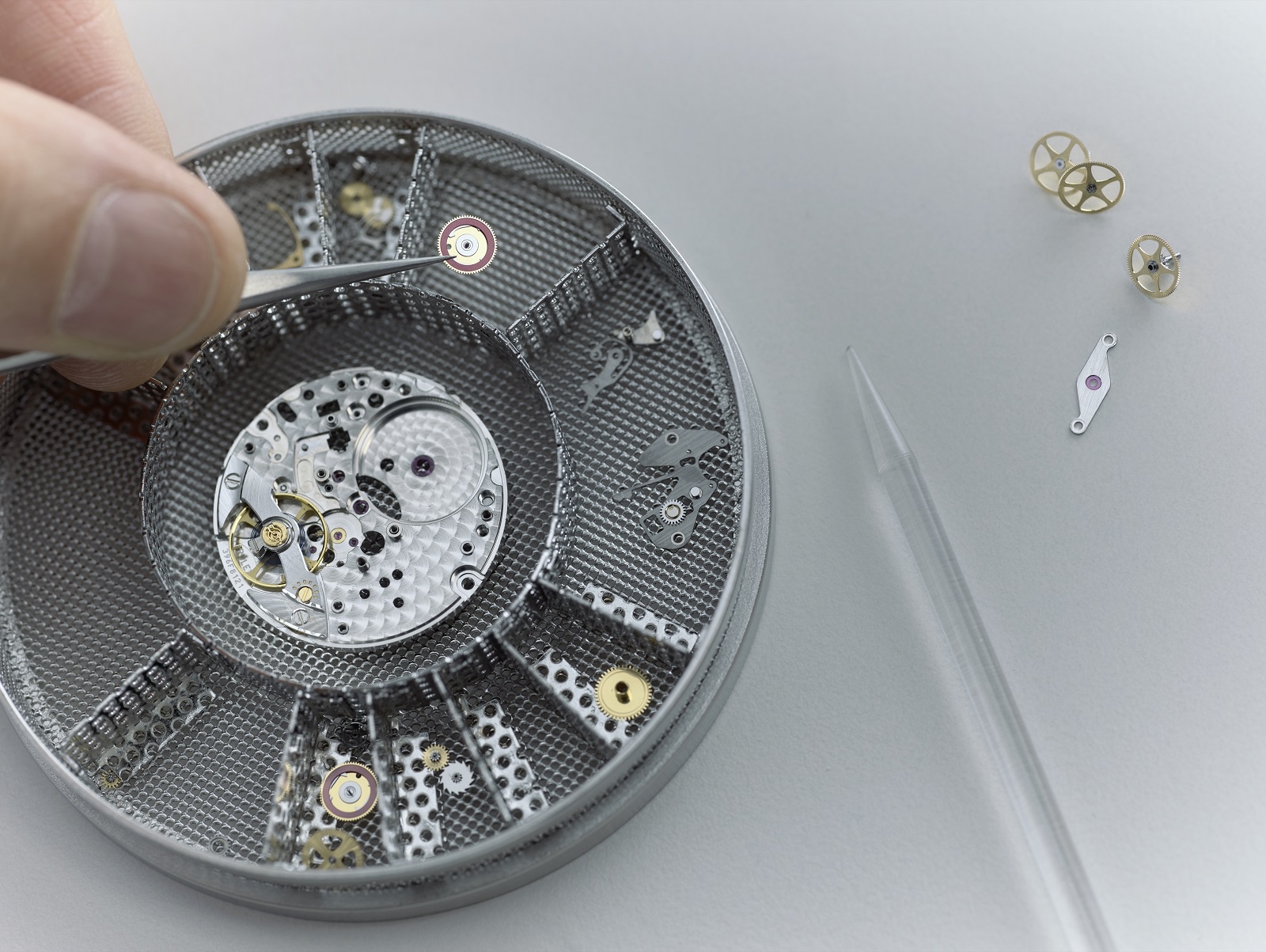
The movement is then disassembled, and its parts grouped accordingly in a wire basket for cleaning in an ultrasonic bath
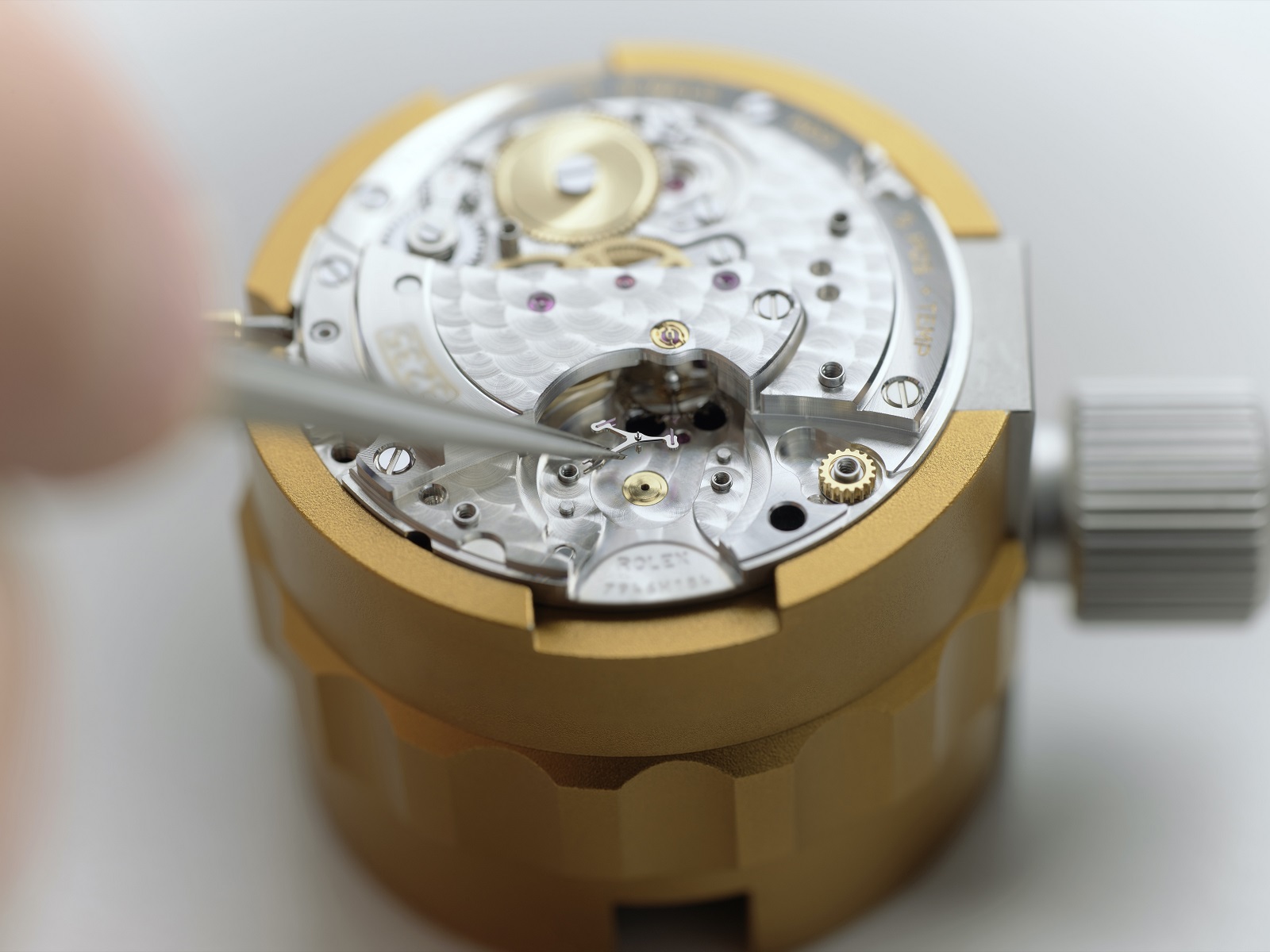
Reassembling the movement – installing the asymmetrical pallet lever of the Chronergy escapement
After the components have been cleaned, the movement is methodically reassembled, with lubrication applied at strategic points. Before it is cased, the reassembled movement is regulated by hand with a Microstella key.
Featuring a scale on its rim to guide the regulation, the proprietary tool adjusts the positions of the four Microstella screws on the inner rim of the free-sprung balance, in order to achieve the +/-2 seconds a day variation of Rolex’s own chronometer standard.
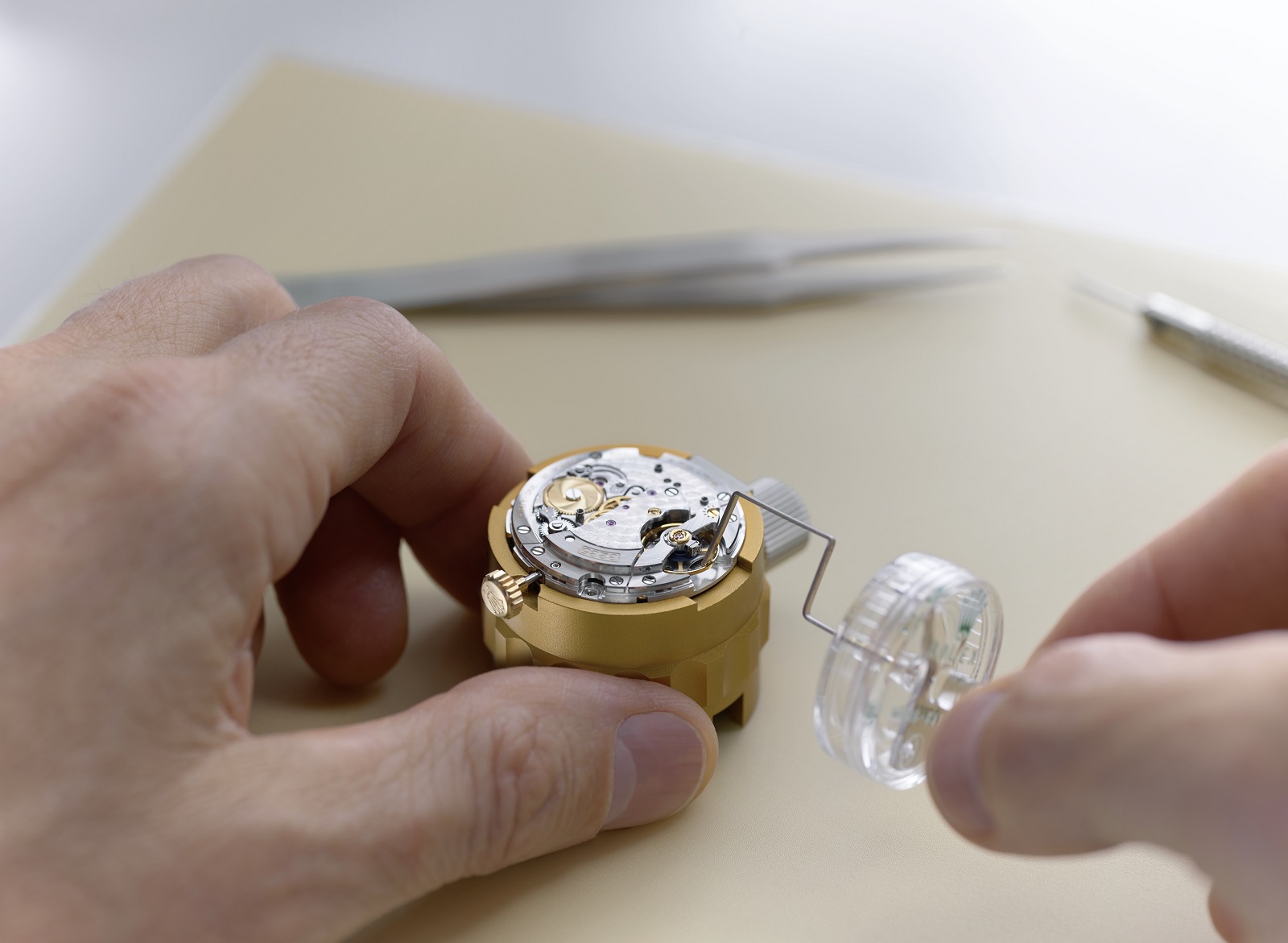
The distinctive Microstella regulating tool to turn the screws on the balance
Like the movement, the case is disassembled into its constituent parts, namely the crystal, bezel, case middle, and back.
Each of the components either polished or satin-brushed manually – the part is mounted on a handheld vice and finished on a polishing wheel. A variety of polishing wheels are called into use, depending on the component and its surface finish.
The process removes scratches and dents as much as possible, restoring the appearance of the case. Similarly, the bracelet is cleaned and then polished by hand.
Subsequently, the gaskets are replaced and the crystal, bezel and case middle are assembled, ready to receive the movement.
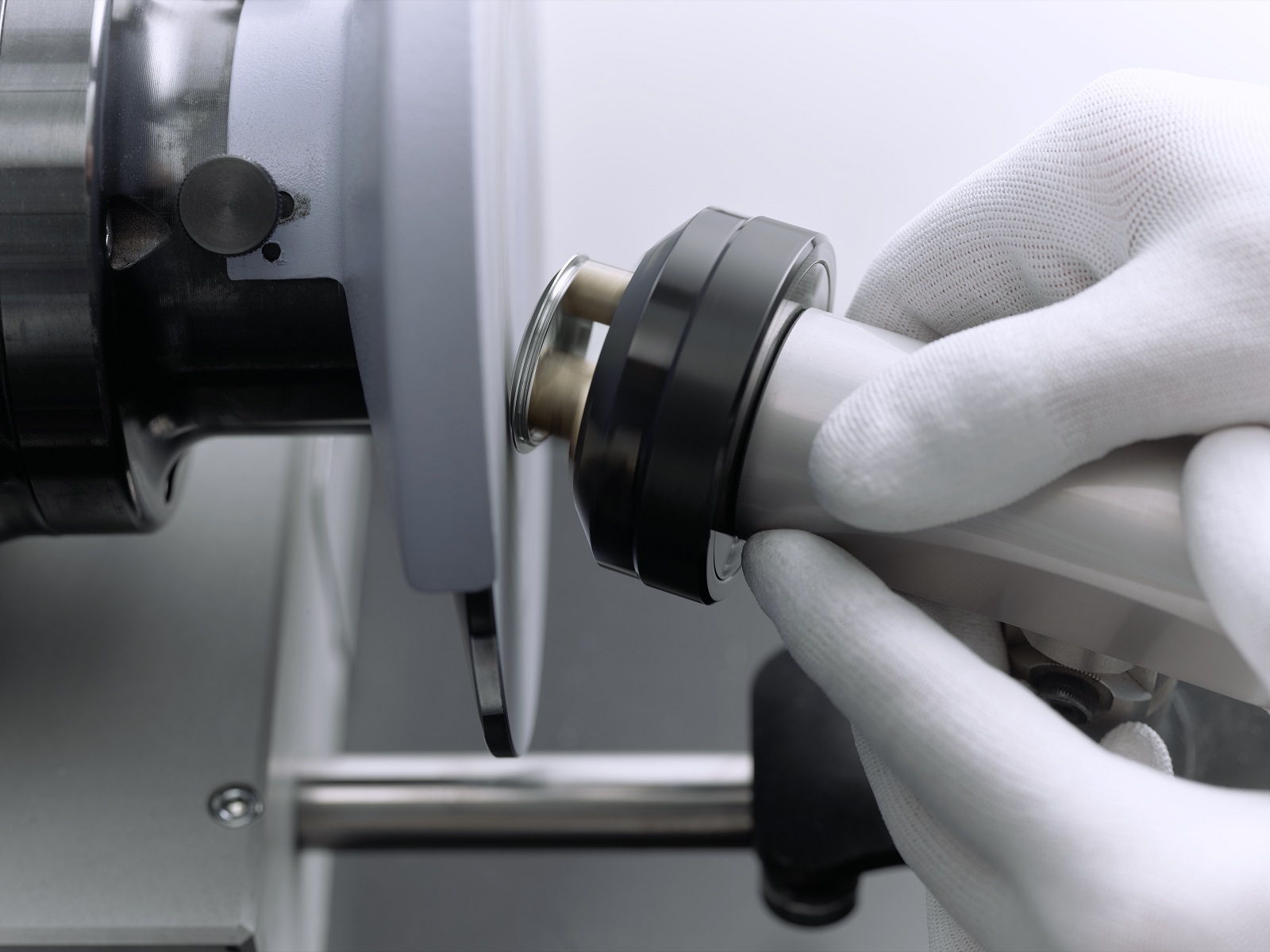
Restoring the mirrored finish on the outer rim of the case back
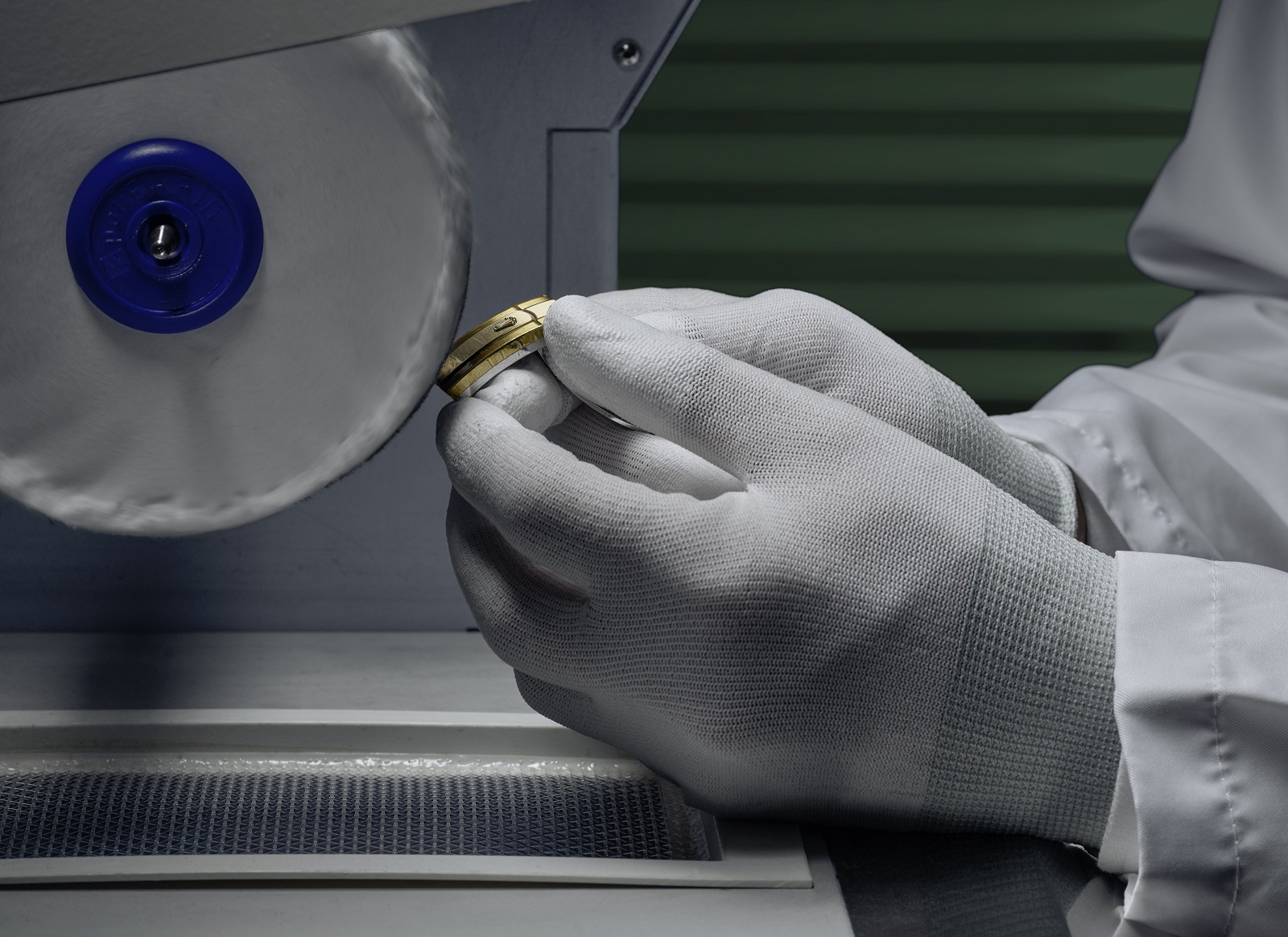
And the clasp of the bracelet
Once the movement has been regulated and case polished, the watchmaker mounts the dial onto the movement, sets the time to midnight – determined by the date changeover – and fits the hands with a specialised manual press.
After installing the movement into the case, the movement is regulated a second time, once again with the Microstella key to ensure optimal timekeeping.
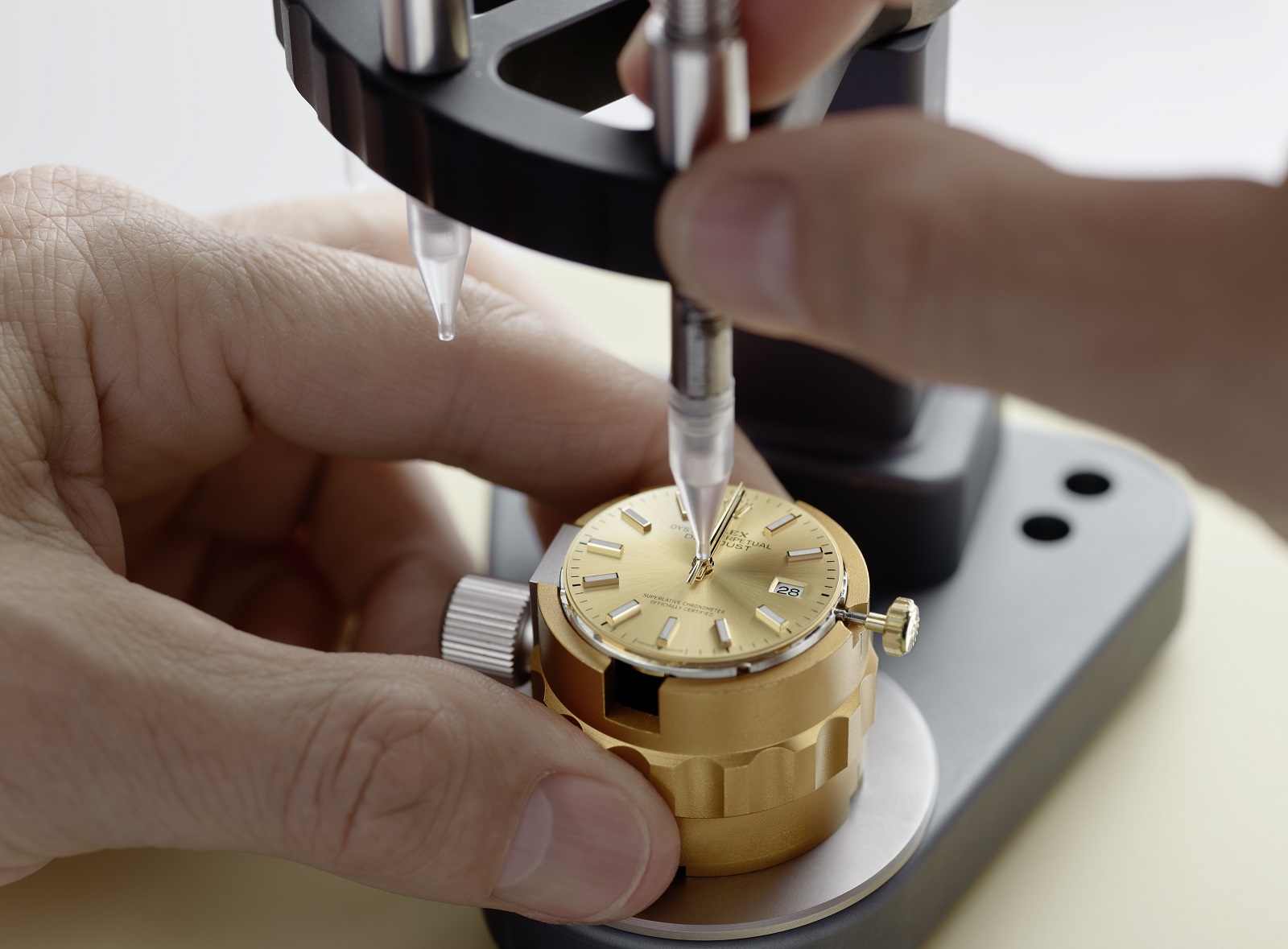
After mounting the dial, the hands are press fit on top
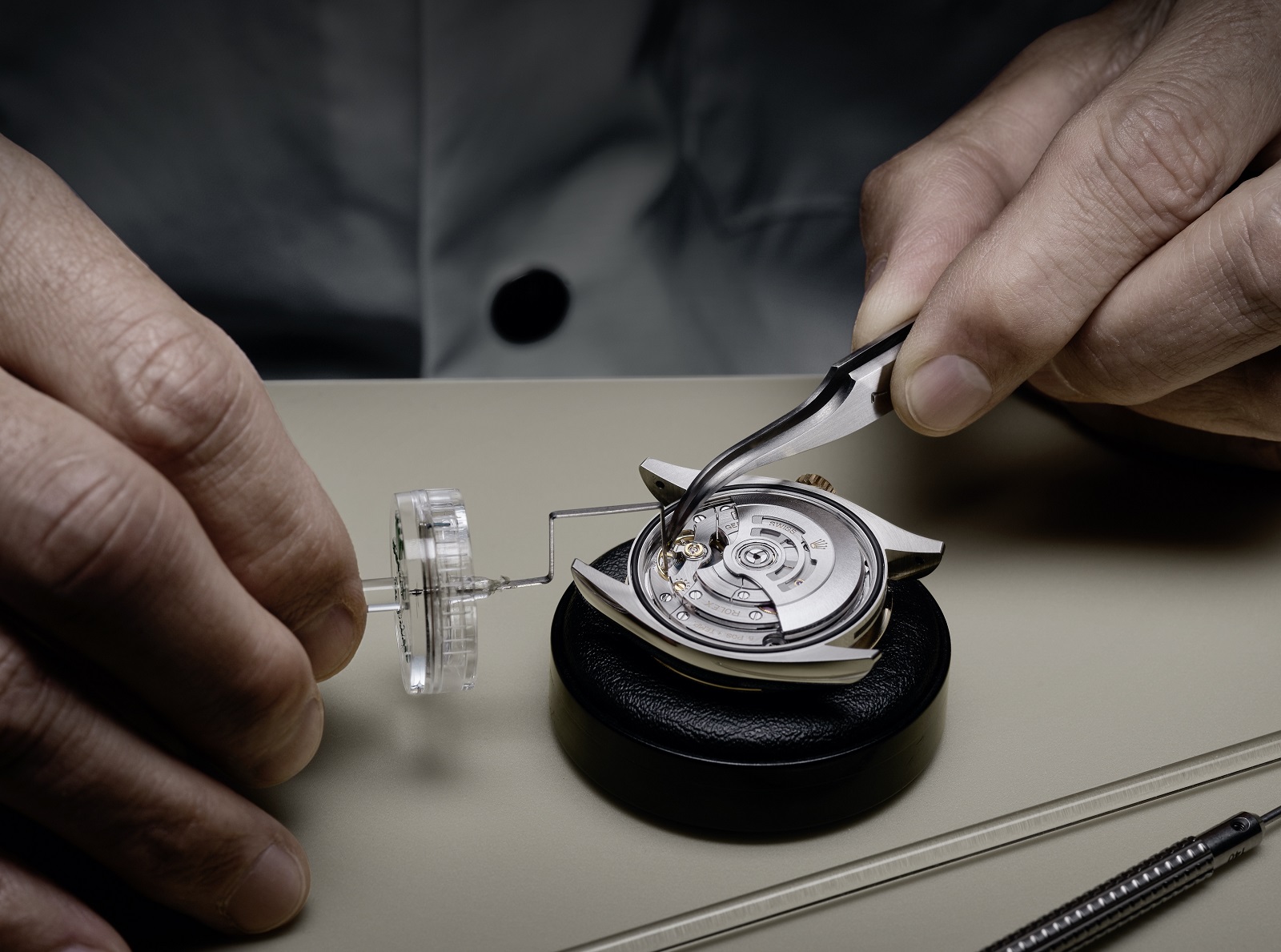
The completed watch is then regulated once again
The watch then undergoes a timekeeping test of at least 24 hours on a machine that simulates being worn on the wrist by rotating the watch at regular intervals and keeping it stationary in a variety of positions.
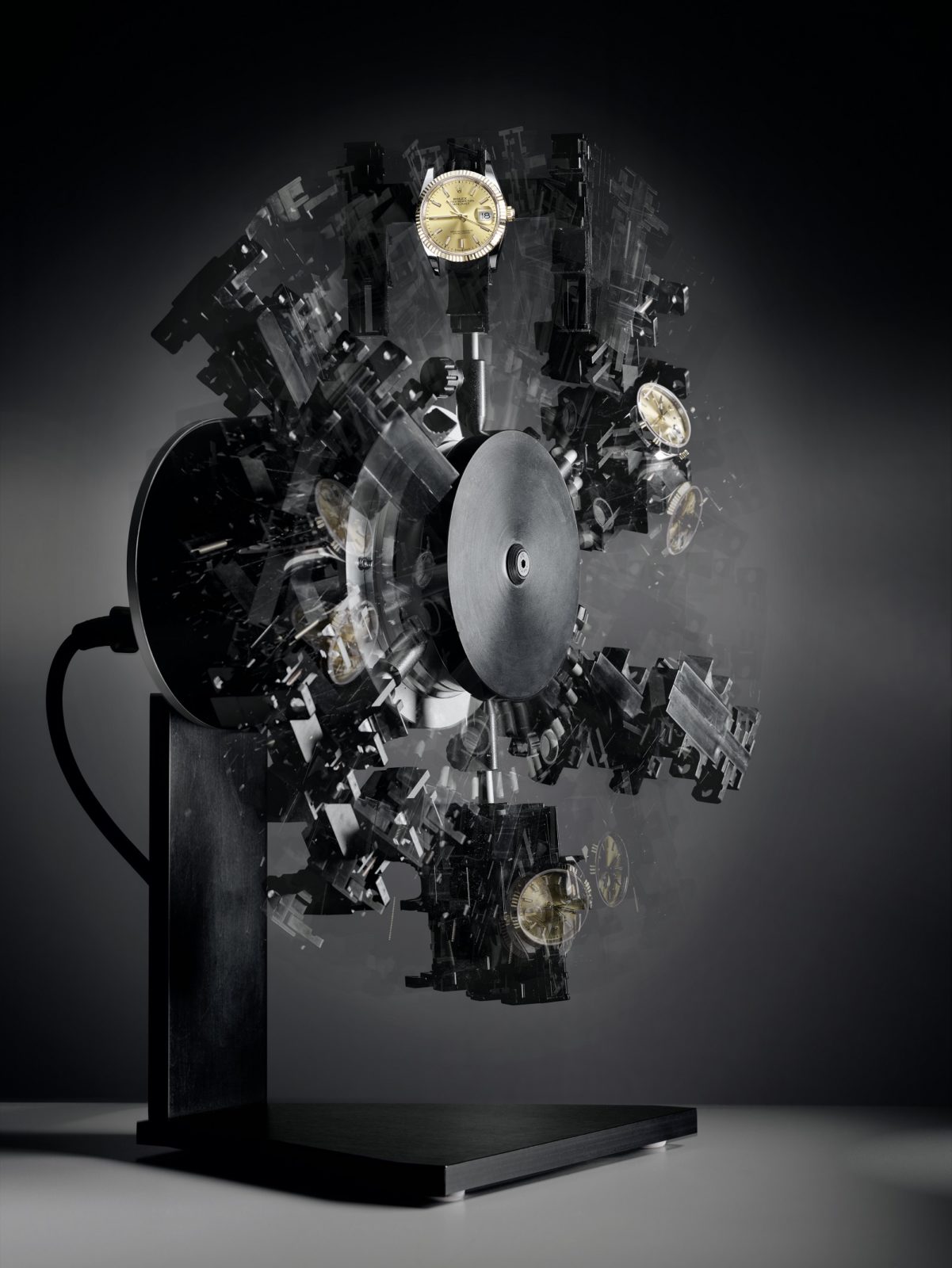
Timekeeping is tested on a specialised machine
Having passed the timekeeping trial, the watch heads to a water-resistance test. It is pressure tested in a proprietary hyperbaric tank developed by Rolex to ensure it lives up to its depth rating.
Once the watch passes the waterproofness test, the watchmaker attaches the bracelet to the case and gives the watch a final once over. He once again ensures it is keeping good time and its functions are working correctly, while also examining the exterior to ensure all surfaces have been correctly refinished.
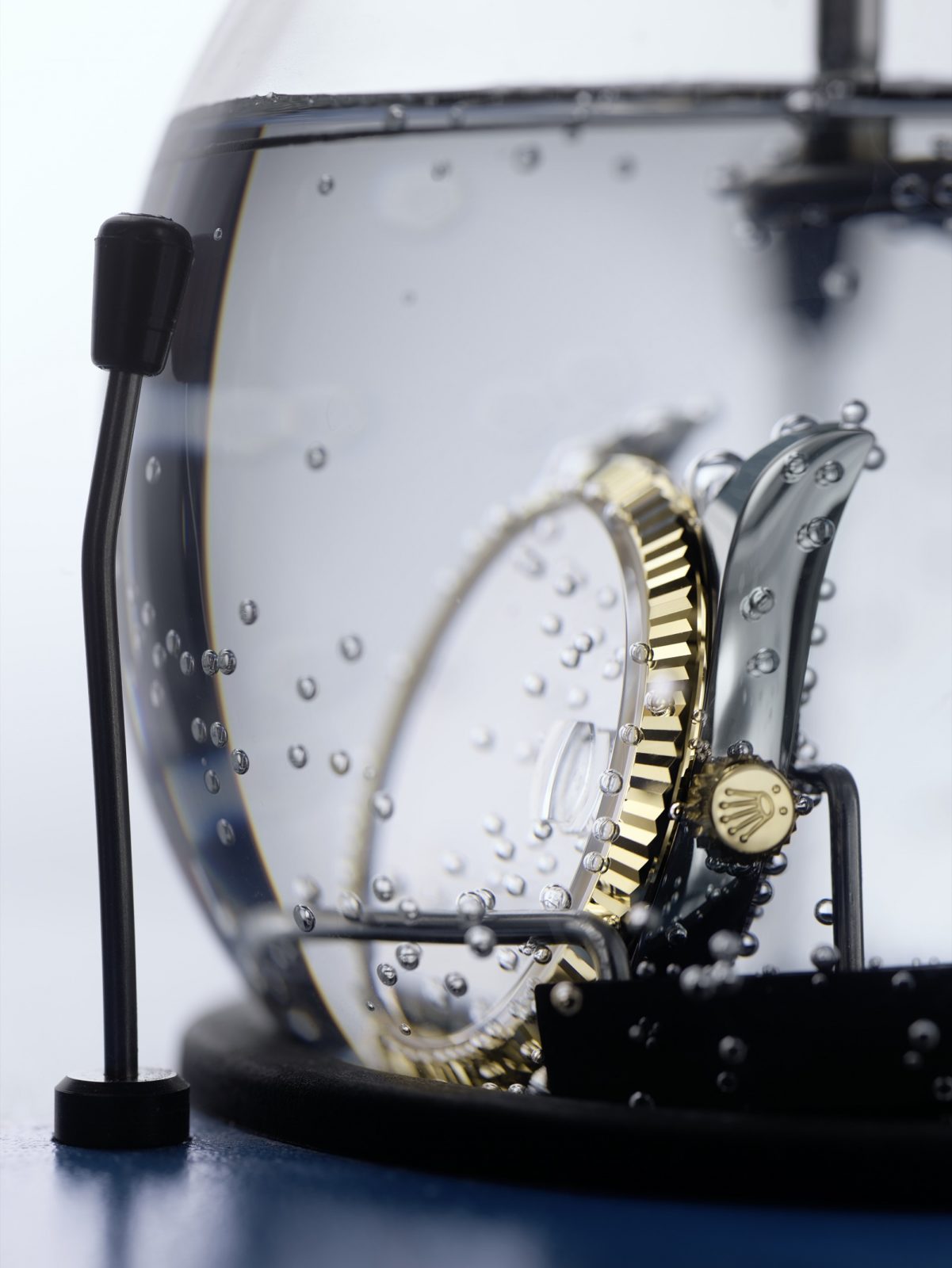
Pressure testing the watch in a hyperbaric chamber
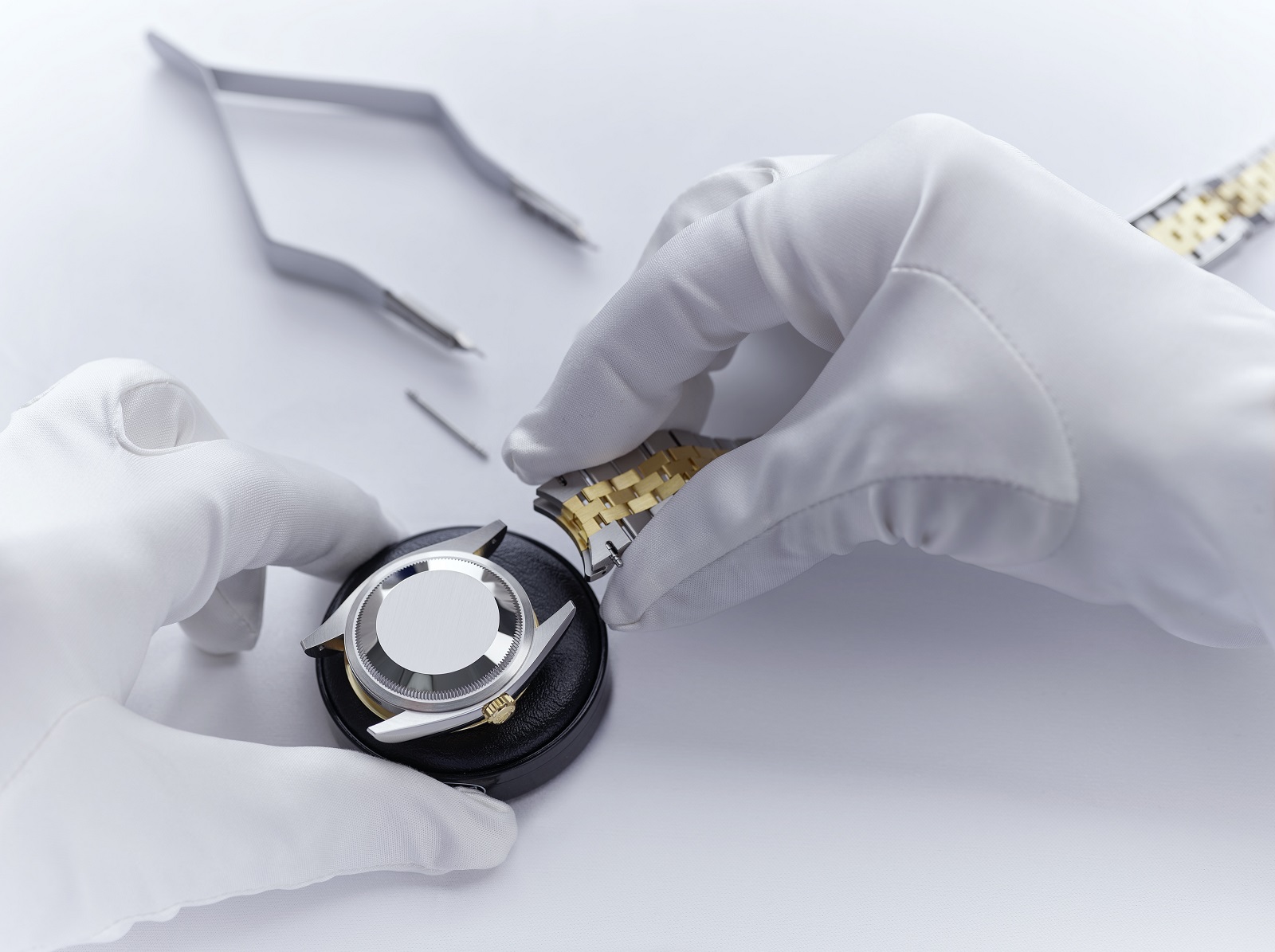
The final stage of servicing
The full service is only complete after the watch passes the final examination. Once that happens, the watch is placed in a velvet pouch ready to be returned to its owner, accompanied by a two-year warranty on parts and labour.
The Restoration Atelier
While a full service for contemporary Rolex watches can be done at any one of the brand’s service centres around the world, vintage watches are returned to the Restoration Atelier with Rolex headquarters in Geneva. The Restoration Atelier uses both traditional methods and the cutting-edge techniques associated with modern-day Rolex manufacturing to restore watches in a manner that’s as sympathetic as possible.
Staffed by a team of watchmakers specialised in restoration – instead of the parts replacement and polishing more typical for a modern watch – the Restoration Atelier not only does the physical work on a watch, but also archival research to ensure historical correctness.
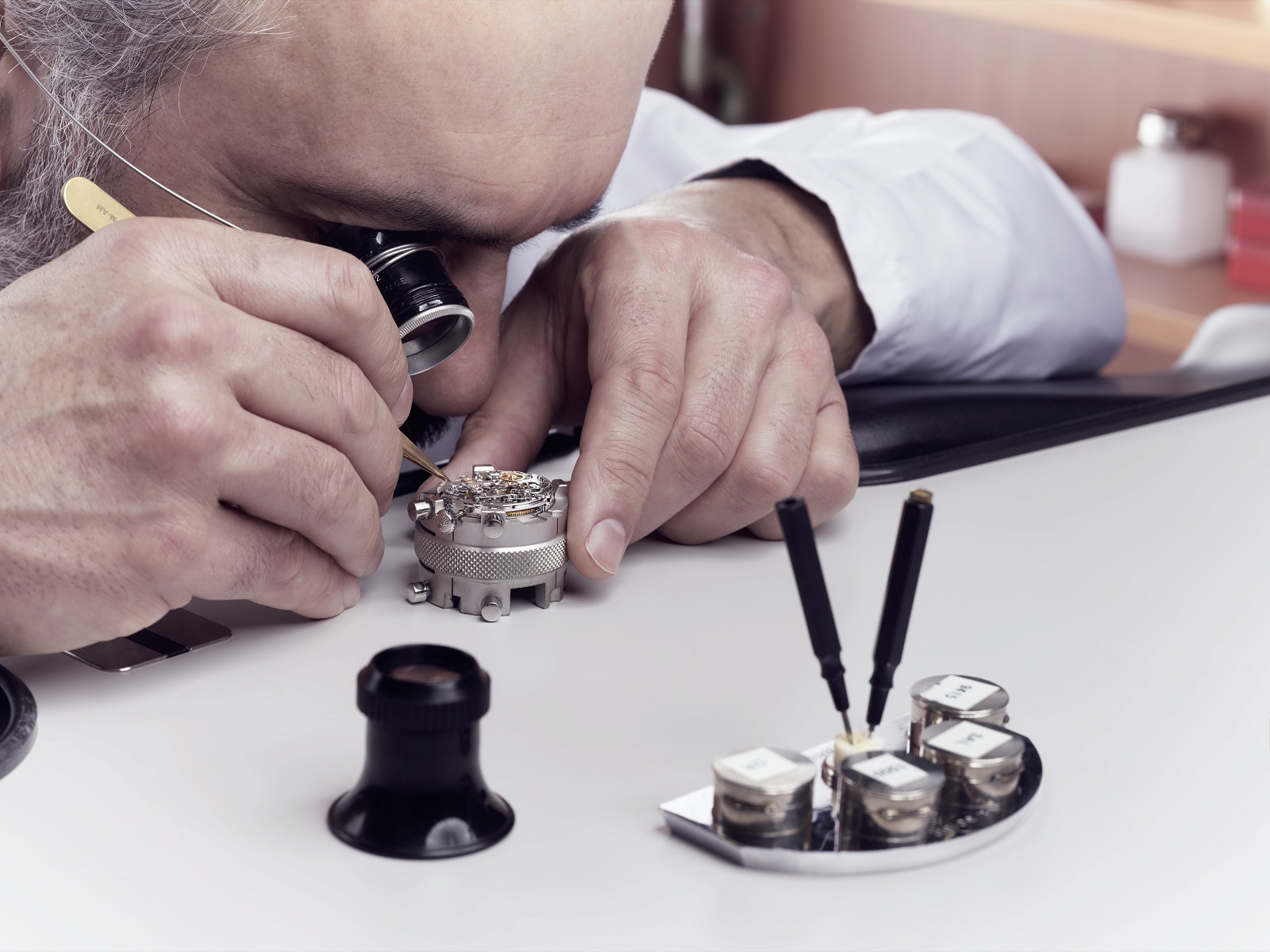
A watchmaker at the Restoration Atelier scrutinising a hand-wound Valjoux 72 movement that was once found in Rolex chronographs like the Daytona
Each restoration carried out by the Restoration Atelier adheres to stringent criteria, both in terms of the brand’s stringent standards for functionality as well as the need for historical authenticity. Consequently, components are either retained and restored, or replaced by parts made from scratch with period-correct techniques – with all the steps taken during the restoration process documented.
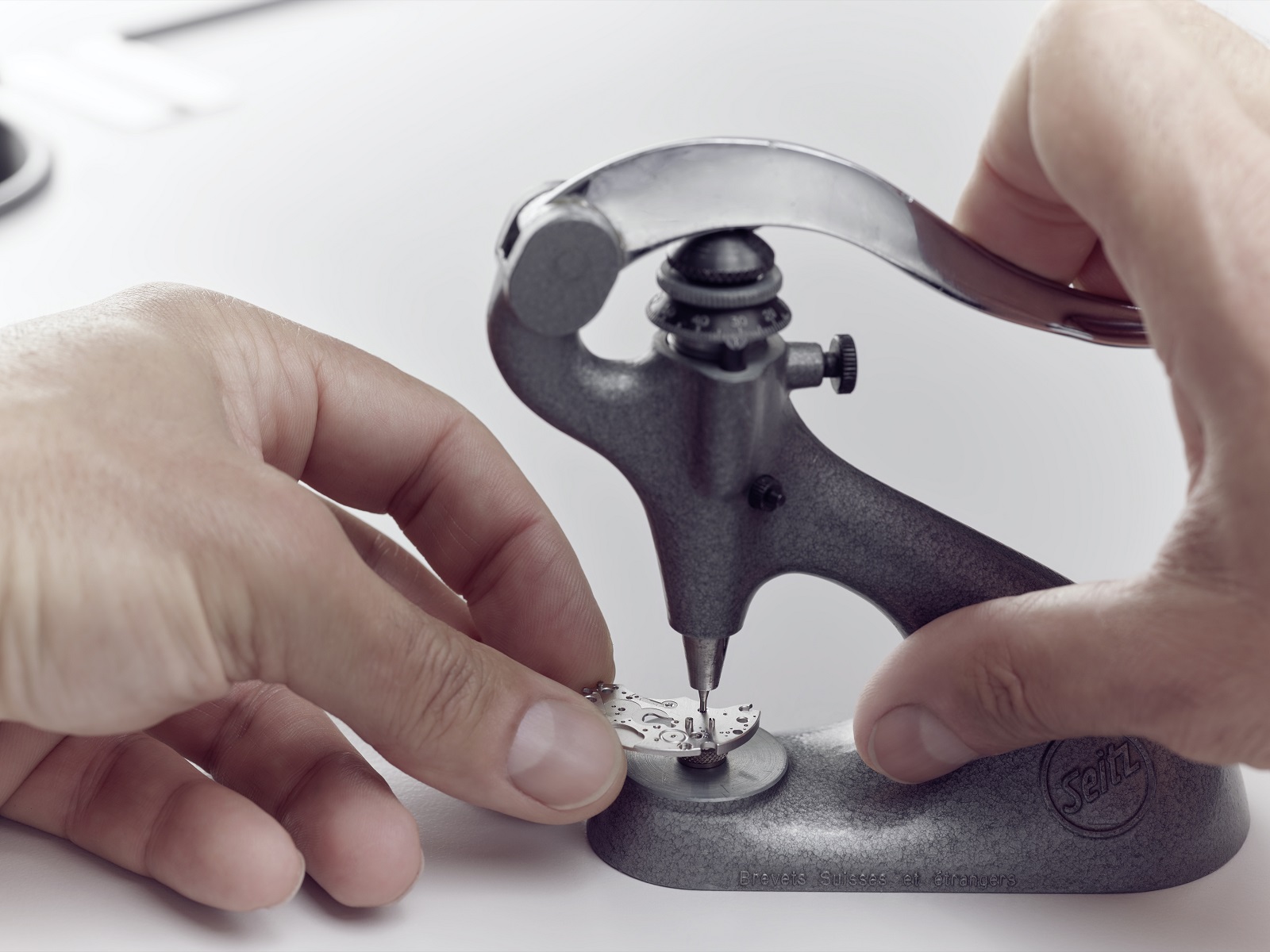
Removing a damaged jewel from the barrel bridge
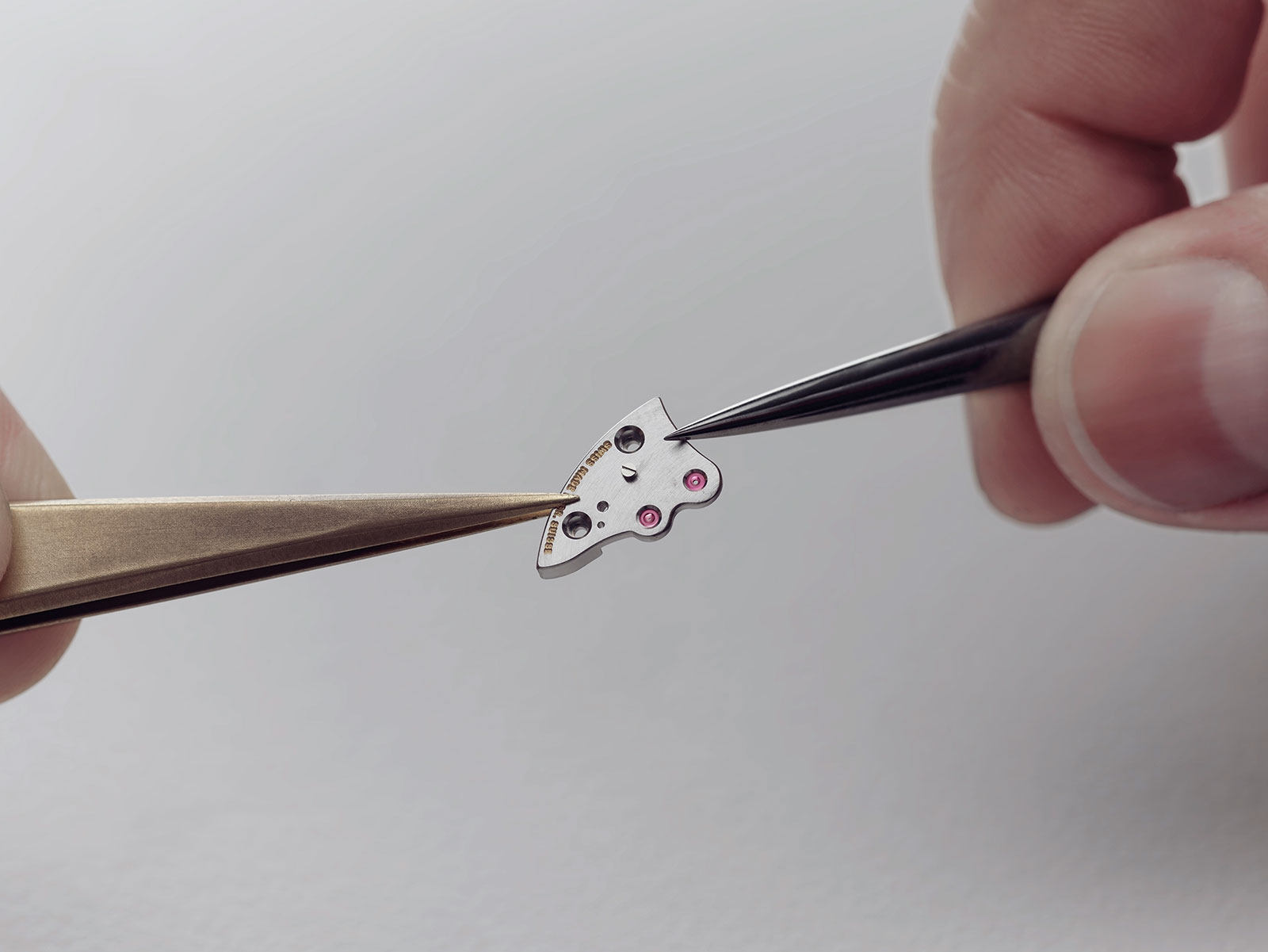
The watchmaker also refinishes the bevels on the escape wheel bridge
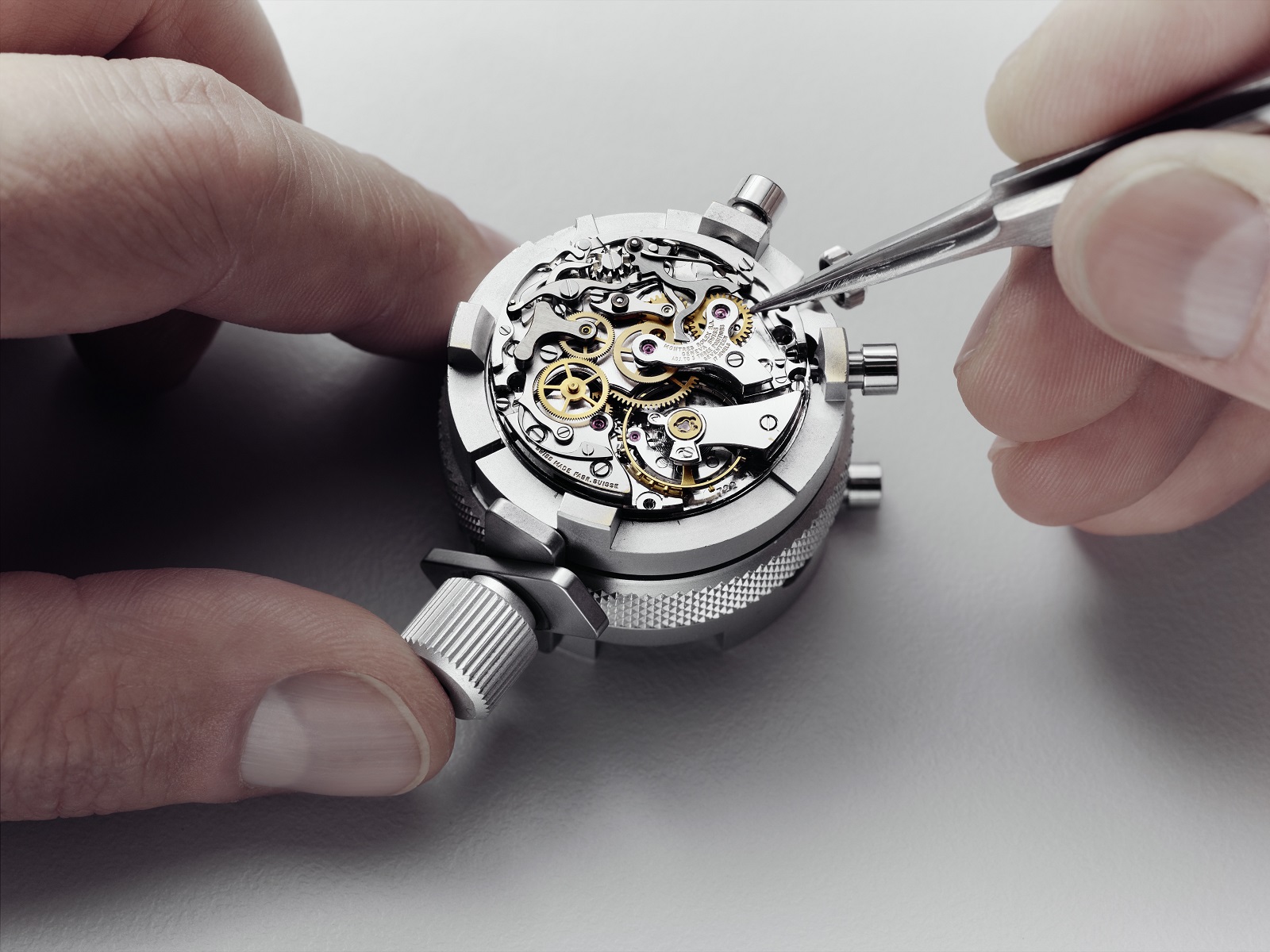
Checking the chronograph wheels
But the Restoration Atelier is about more than just watchmaking. It also includes a handful of jewellers whose skills are necessary for restoration of external components like the bracelet, clasp, or a gem-set case. The jewellers not only repair such parts, but can also refinish them delicately to ensure that none of the originality is lost.
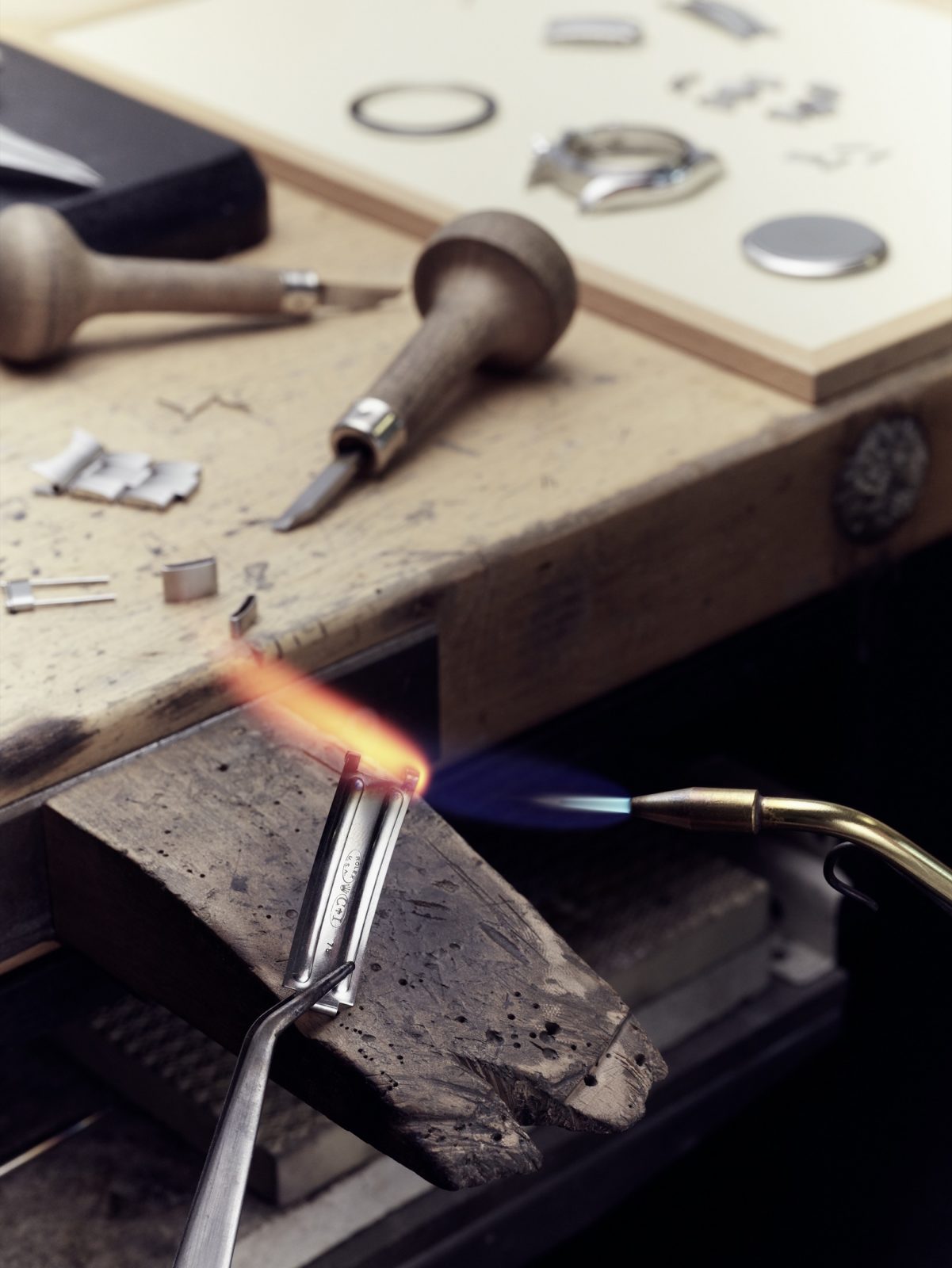
Repairing the hinge of a bracelet clasp by soldering on a new hinge
Once fully restored, the vintage Rolex is returned to its owner in a special presentation box, along with a personalised booklet that details the steps taken during the restoration.
For more, visit Rolex.com.
Back to top.


